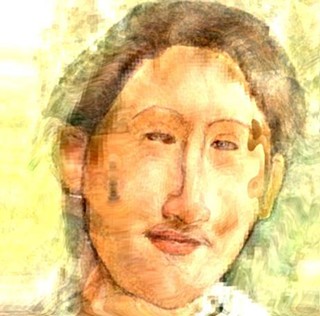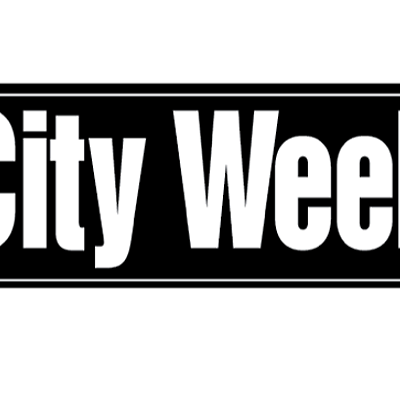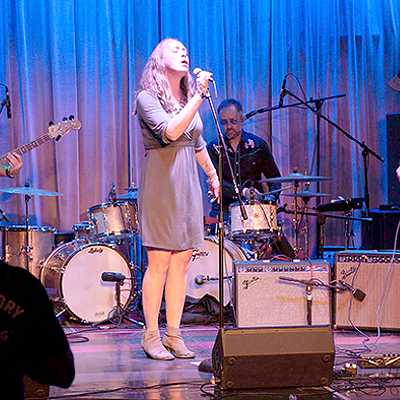For Orts Theatre of Dance, diversity means variety within the core modern dance style. For the University of Arizona Dance Division, the word designates a multiplicity of styles -- modern, jazz and ballet -- in a single evening, and occasionally in a single work. For ZUZI! Move It Dance Company, diversity indicates a showcase of modern dancers of various ages, backgrounds and intentions in an informal, supportive atmosphere.
Well, vive la différence! The groups had better offer a distinct production, because they're all competing for essentially the same audience between April 27 and 30. If people trip over each other this weekend, it will be dance lovers scurrying from one event to the next. Luckily, with a little planning a dance aficionado can take it all in.
Orts in the Park After Dark at the Reid Park band shell is the most focused program, but even it is a mosaic of new and returning works, resident and guest artists, and feet-on-the-floor dancing and trapeze pieces.
Brand-new is "Balanced Edge," one section of a work that will eventually span an entire evening. It's a collaboration between choreographer Anne Bunker -- the force behind Orts -- and composer Chuck Koesters. "We're working on a piece about things in balance, whether it's physical balance or social balance or emotional balance or geographical balance," says Bunker. "The part that we performed in the fall and repeated in February had to do with mobiles, but in the piece for the park we're dancing with suspended 50-pound sandbags. We're not really moving on the sandbags, but we're moving through the space with them, so it's like keeping your balance on a ship that's rocking back and forth."
Orts' more usual style of low aerial work can be seen in Robert Davidson's "Ave Maria," a trapeze duet.
Only the costumes will fly in "Shadow Beauty"; choreographed by Orts dancer Mimi Chen, it follows four Chinese concubines through their lives and servitude. "It incorporates long-sleeve dancing, which is a traditional Chinese dance, with modern dance," explains Bunker. "The wind picks the sleeves up, and they flow beautifully."
Although "Shadow Beauty" dates from Chen's student days, it will be new to the Orts audience. So will Matthew Henley's "A Bitter Suite," not seen since Henley's senior concert at the UA.
Then there's Bunker's "Toiletries," new this past season but already an Orts trademark work. "It's hilarious," Bunker says proudly. Wheeled toilets, plungers and assorted bathroom accessories spin around to avant-garde tangos by Astor Piazzolla and Gary Burton. Bunker was not so flushed with excitement over "Toiletries" that she forgot to program a classic work, the 1985 "Chiaroscuro" by her mentor Rodney Griffin, a well-known dancer and a choreographer for the Metropolitan and Santa Fe opera companies. "I've been waiting for the right group of dancers to execute this piece," says Bunker. "It depends on modern technique and ballet technique, and it requires a certain temperament and theatricality."
UA Dance's Spring Collection is actually two concerts showcasing choreography by UA faculty and students. You might think that a school teaching ballet, modern and jazz dance would divide a performance like this into three distinct sections, but dance head Jory Hancock says there's too much stylistic cross-pollination for that.
"More and more, the students are becoming well versed and balanced in all three styles," Hancock says. "That allows the faculty to choreograph in an aesthetic that's a fusion of all three, and the students handle it beautifully. And because the student choreographers are becoming really familiar with all three vocabularies, they're able to blur those lines, too."
The most obvious example of this synthesis is Michael Williams' "Five Views of Misterioso," described as "a work with both modern and jazz elements set in a classical form to a score by Thelonious Monk."
"This piece is a little dark, which is atypical for Michael, and it has an especially unusual use of props," Hancock says cryptically.
That work is on the Thursday and Friday programs, along with Nina Janik's "WaWaWa," inspired by 1920s cartoons; Susan Quinn's "Swingle Singers," which Hancock says absorbs a lot of ballet into work that is essentially jazz and modern; a solo by graduate student Tara Lee that incorporates film; a senior project choreographed by Amy Ernst; and Melissa Lowe's "Female Forte," which Hancock calls "a salad of female solos" in classical and contemporary ballet styles.
The Saturday matinee and evening lineup consists of "Female Forte"; Ernst's "Rodrigo," whose choreography examines the shifts from solo guitar to full orchestra in a Joaquin Rodrigo concerto; Loewe's "Point of Origin," using childlike motifs; Sam Watson's study of physical and musical opposites in "Front to Back/Back to Front"; Erin Boone's "Microcosm," a modern-dance piece inspired by the lives of cells; and a variety of works by graduate and undergraduate students.
"An evening of college dance can be pretty horrible, but this isn't like that!" Hancock contends. "People ask us all the time which was the student piece and which was the faculty piece, because the quality of the choreography and dancing is so high."
ZUZI! Move It Dance Company makes no elevated claims for the material in its No Frills, Cheap Thrills, Come-As-You-Are Dance Happen-in'. Not that ZUZI! artistic directors Nancy Mellan and Nanette Robinson are ashamed of anything that will transpire at their theater in the Historic Y; it's just that the show is mainly an informal opportunity for dancers and choreographers to share whatever they're working on, try something new, and talk it over with the audience.
" 'No Frills' means we're not spending much time on lights and costumes -- we didn't even know if we'd have lights in time for this," says Mellan. " 'Cheap' refers not to the quality or the artistic integrity -- that's where the 'Thrills' come in -- but to the price of the ticket. And 'Come As You Are' means, for the audience, don't worry about your energy level or how you look, and, for the artists, come as you are no matter where you are in your development, even if you just have a 32-count phrase and an idea that's bubbling up inside you."
The show will include a solo by nationally acclaimed dancer and improvisational choreographer Andrew Marcus, who will also conduct a dance workshop on sensation and form at 6 p.m. Tuesday, May 2, at ZUZI!.
In addition to this New York import, there will be independent artists from around Tucson, the Dance Matrix company from Bisbee, and even students from Pima Community College (where Mellen teaches) and Rincon, Tucson and Palo Verde high schools. "Don't underestimate the quality of artistry in Tucson's high schools," warns Mellen. Robinson adds, "It's intimidating us. If we were at that level when we were that age, think what we could be doing as choreographers now."
The UA Dance Division presents the first program of Spring Collection at 8 p.m. Thursday and Friday, April 27 and 28; the second program follows at 2 and 8 p.m. Saturday, April 29, at the UA Ina Gittings Dance Theater, on campus north of McKale Center. Tickets are $9, $7 for seniors and students. For information, call 621-1162.
Orts in the Park After Dark takes the stage at 7:30 p.m. Friday through Sunday, April 28 through 30, at Reid Park's DeMeester Outdoor Performance Center. Admission is free; bring a blanket or lawn chair. Call 624-3799 for details.
ZUZI! Move It Dance Company presents its No Frills, Cheap Thrills, Come as You Are Dance Happen-in' at 7:30 p.m. Saturday and Sunday, April 29 and 30, at ZUZI's Little Theater in the Historic Y, 738 N. Fifth Ave. Admission is $5. For information, call 629-0237.











